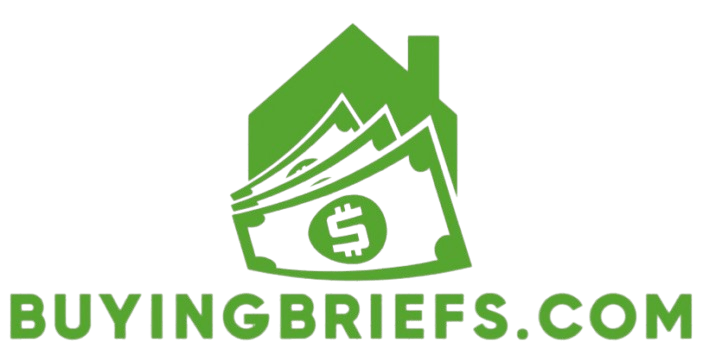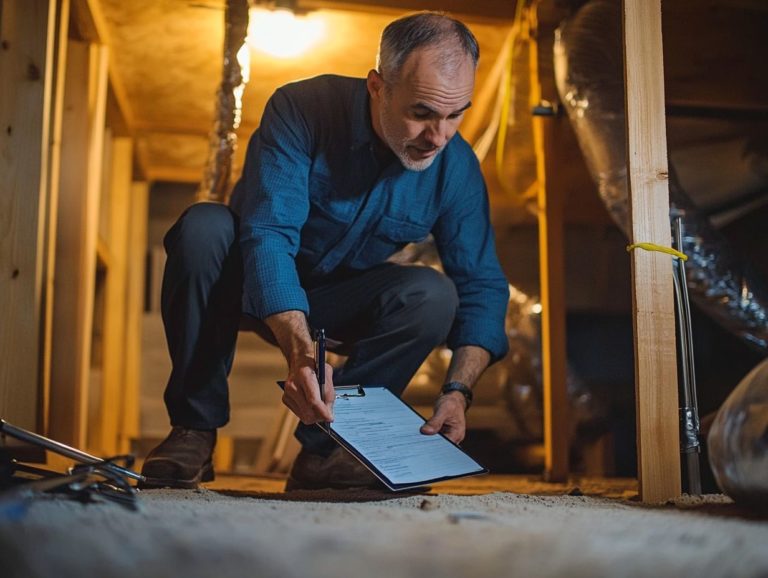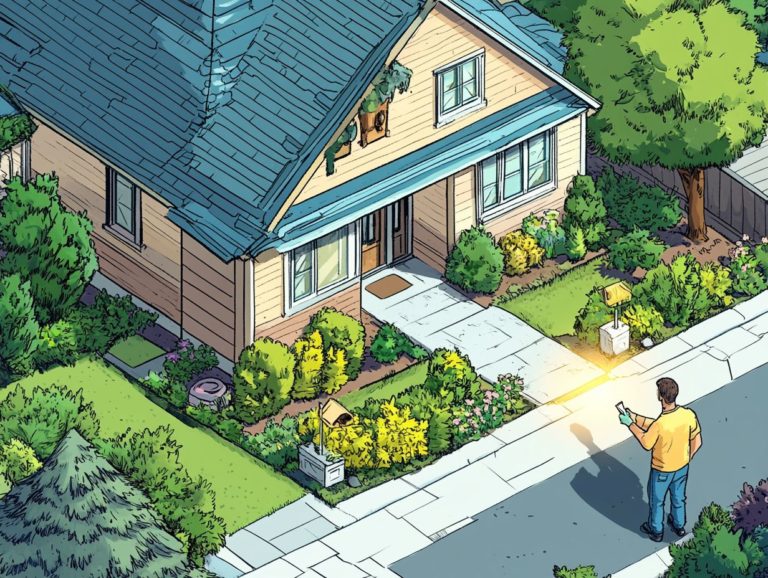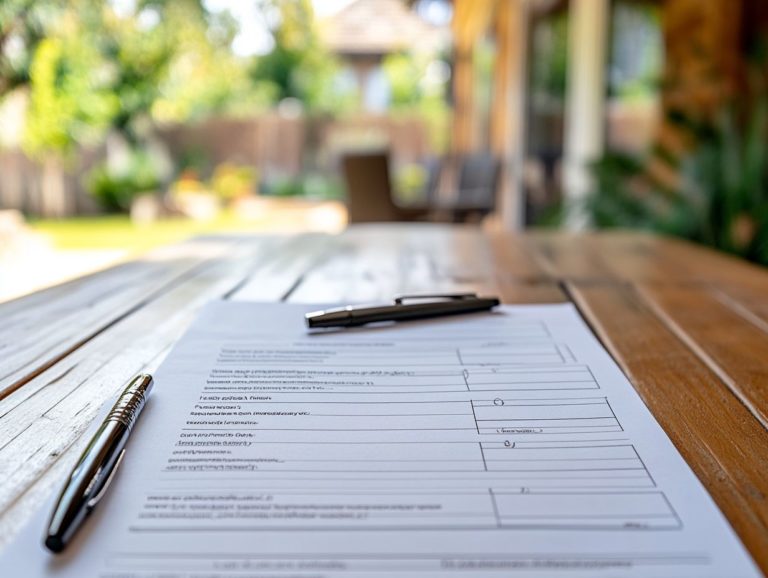The Essential Checklist for Home Inspections
When you’re considering the purchase or upkeep of a home, a thorough inspection is essential to guarantee that everything is in pristine condition.
This checklist covers every important part you need to know, from the exterior and roof to the plumbing and electrical systems.
Whether you’re a first-time buyer or a seasoned homeowner, knowing what to look for can save you time, money, and a great deal of stress in the future.
Dive deep into each crucial section to ensure your home is not only safe but also efficient and comfortable.
Contents
- Key Takeaways:
- 1. Exterior Checklist
- 2. Roof and Attic Checklist
- 3. Interior Checklist
- 4. Plumbing Checklist
- 5. Electrical Checklist
- 6. Heating and Cooling Checklist
- 7. Kitchen Checklist
- 8. Bathroom Checklist
- 9. Basement and Foundation Checklist
- 10. Garage Checklist
- 11. Safety Checklist
- 12. Energy Efficiency Checklist
- 13. Environmental Checklist
- 14. Pest and Mold Checklist
- 15. Final Walkthrough Checklist
- Frequently Asked Questions
- What is The Essential Checklist for Home Inspections?
- Why is The Essential Checklist for Home Inspections important?
- How can The Essential Checklist for Home Inspections be used?
- What are some key areas covered in The Essential Checklist for Home Inspections?
- Is The Essential Checklist for Home Inspections customizable?
- Can the Essential Checklist for Home Inspections Be Used for New Construction Homes?
Key Takeaways:
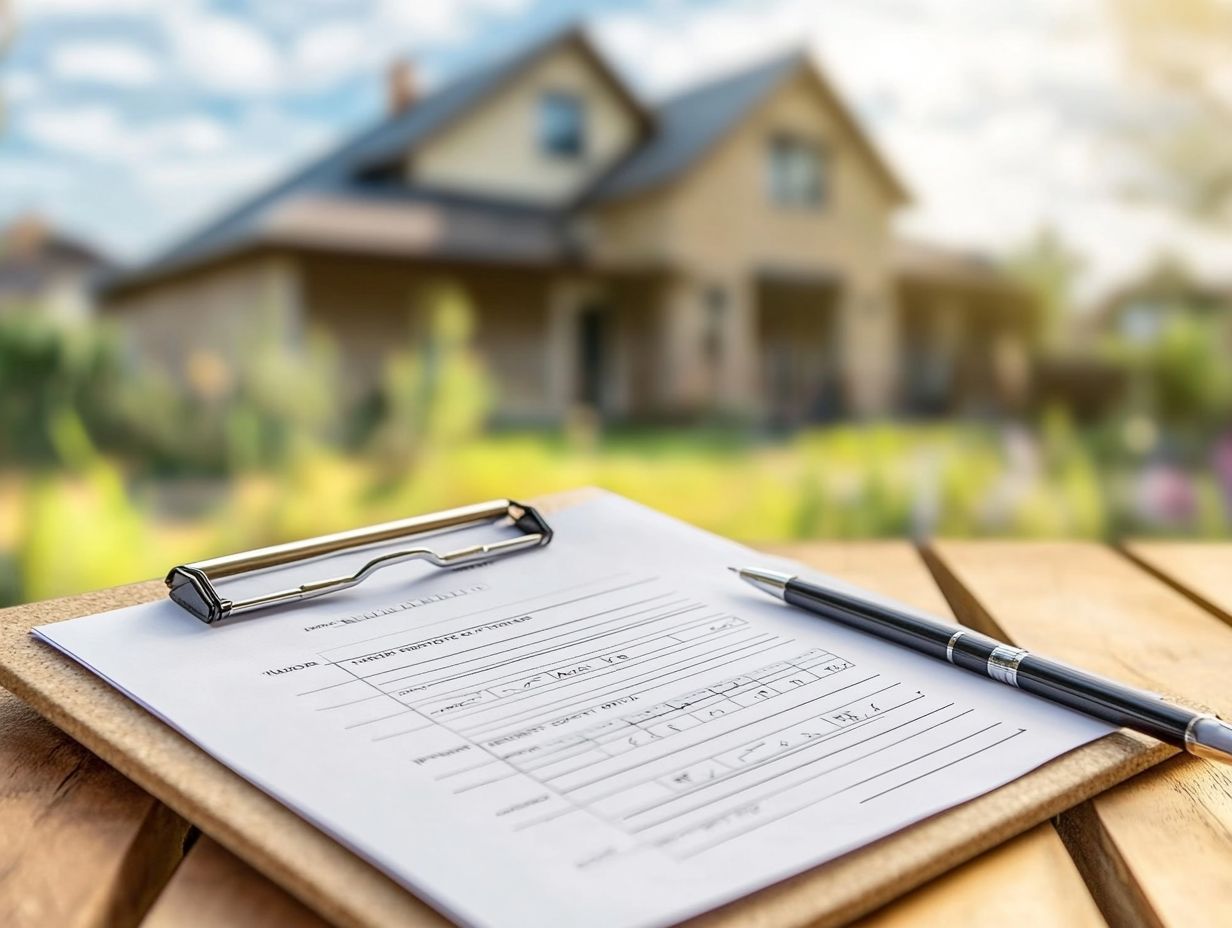
- Check the exterior, roof, attic, and systems.
- Look for pest, mold, and environmental issues.
- Conduct a final walkthrough to confirm everything is ready for purchase.
1. Exterior Checklist
The exterior checklist is an important part of the home inspection process. It offers a comprehensive overview of the property’s condition and identifies potential issues. For a detailed understanding, check out what to look for in a home inspection report that could impact its value and safety.
As a homebuyer, it’s essential to know what to look for when evaluating the exterior aspects of a property, including the foundation, roof, siding, and landscaping.
When you assess the foundation, watch for cracks or signs of moisture infiltration; these could indicate serious structural problems that may necessitate significant repairs.
The condition of the roof is equally important. Missing shingles, sagging, or leaks can lead to costly water damage if not addressed promptly.
Inspect the siding; a licensed home inspector might reveal issues with insulation or pest damage. Don’t overlook landscaping, as it plays a critical role in drainage and curb appeal.
Partnering with a knowledgeable real estate agent can be invaluable. They can guide you through these assessments, help interpret the inspector’s findings, and negotiate necessary repairs with sellers to ensure your investment is sound.
2. Roof and Attic Checklist
The roof and attic checklist is essential for your home inspection. It helps you uncover hidden issues like roof damage and insulation inefficiencies, emphasizing the importance of a thorough home inspection.
Inspect your roof shingles and flashing regularly to reveal potential vulnerabilities. If neglected, these may lead to costly repairs down the line.
Identifying signs of water intrusion not only helps prevent mold and mildew growth but also contributes to a healthier living environment.
A well-insulated attic is critical for maintaining optimal heating, ventilation, and air conditioning (HVAC) efficiency. This reduces energy consumption and lowers your utility bills.
By ensuring effective insulation and sealing, you can boost comfort throughout your home, making these routine checks vital to your home maintenance strategy.
3. Interior Checklist
An interior checklist during a home inspection is essential for pinpointing major defects, safety concerns, and the overall condition of the home’s systems. For those preparing for this process, tips for a successful home inspection day offer invaluable insights to both potential homebuyers and real estate agents.
Examine the walls, floors, and ceilings carefully. You can uncover issues like mold, structural damage, or water leaks that could escalate into significant and costly repairs if left unchecked.
Being aware of these potential problems is crucial; they impact immediate comfort and the long-term investment value of the property.
A detailed inspection report highlights defects in these critical areas and gives you the power to make informed decisions, negotiate necessary repairs, or even reconsider the purchase altogether.
This ultimately helps you sidestep the pitfalls associated with unexpected home challenges.
4. Plumbing Checklist
The plumbing checklist plays a vital role in a home inspection. It guides you in identifying plumbing issues that could lead to water damage or costly repairs. It ensures your home’s water supply, drainage, and waste systems function properly.
When you look at these systems, a licensed home inspector will check common concerns. These include persistent leaks, which can undermine a property’s integrity, and water pressure issues that may hint at deeper plumbing problems. Pay attention to the age of the pipes; older materials are often more vulnerable to failures and clogs.
For potential homebuyers, understanding and addressing these plumbing concerns is crucial. This is not just for negotiating repairs but also for avoiding future complications that could disrupt your living experience. A thorough assessment is essential, as these factors can significantly impact your comfort and financial stability in the long run.
5. Electrical Checklist
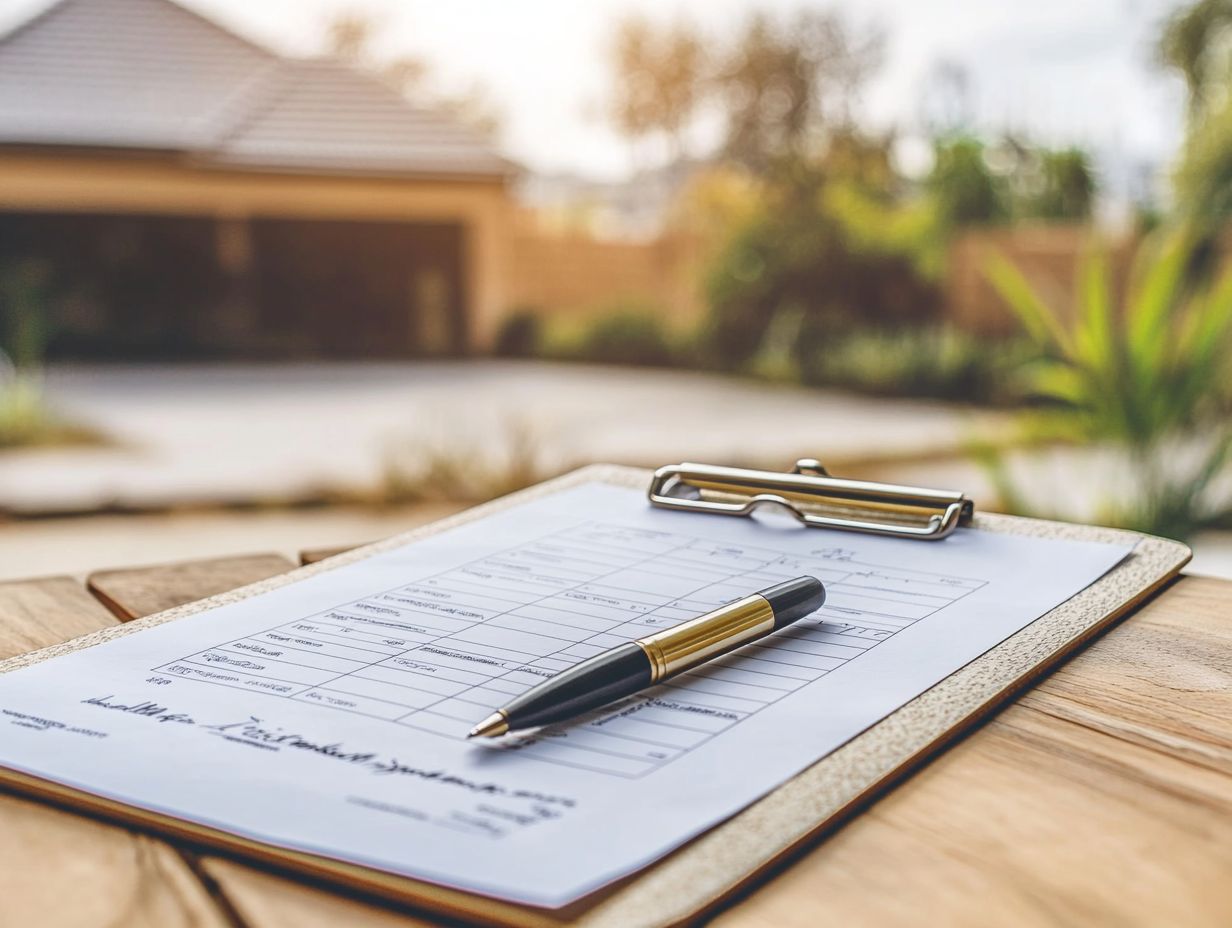
An electrical checklist is essential in the home inspection process! It helps you pinpoint potential electrical issues that pose safety risks. Understanding the importance of comprehensive home inspections ensures your home’s wiring, outlets, and fixtures meet inspection standards.
Key elements to check include circuit breakers. Confirm they re functioning properly and not overloaded, and verify proper grounding to minimize the risk of electrical shocks.
These details are vital! Ignoring electrical problems can lead to dangerous situations, including fire hazards. Many insurance companies demand compliance with electrical codes, so addressing deficiencies is crucial to avoid potential claims denials.
By proactively conducting a thorough electrical assessment, you create a safe living environment while protecting your investment!
6. Heating and Cooling Checklist
The heating and cooling checklist is essential for assessing your Heating, Ventilation, and Air Conditioning (HVAC) system during a home inspection. It ensures your system operates efficiently and meets the energy standards crucial for a comfortable living environment.
One often overlooked aspect of this evaluation is the necessity of inspecting the units for signs of wear and tear. Even minor issues, if left unchecked, can escalate into significant problems.
Evaluating filter cleanliness and the integrity of the ducts is vital for maintaining optimal airflow. Clogged filters or damaged ducts can plummet your indoor comfort and inflate your energy bills since the system must work overtime.
By prioritizing these inspections, you foster a more efficient HVAC system, creating a comfortable atmosphere while minimizing unnecessary expenses!
7. Kitchen Checklist
The kitchen checklist during a home inspection focuses on the functionality and safety of kitchen systems. This ensures all appliances, plumbing, and electrical components are in excellent working order and free from hazards.
As a homebuyer, you should examine appliances carefully. Look for signs of wear and tear, such as rust or malfunctioning parts. These can be telltale indicators of potential future issues and unwanted expenses.
It’s essential to check for any plumbing leaks under the sink or around the dishwasher. These could lead to water damage and mold, ultimately detracting from your overall satisfaction with the home.
Electrical safety should also be at the forefront of your concerns! Faulty wiring or outdated outlets can pose serious risks, impacting not just the kitchen but the entire household.
By addressing these factors thoroughly, you bolster your confidence as a buyer and ensure a smooth transition into your new space. Act now to conduct these essential inspections!
8. Bathroom Checklist
The bathroom checklist is crucial during a home inspection. It evaluates plumbing issues, electrical problems, and safety concerns, ensuring this essential space meets the standards necessary for comfort and functionality.
Beyond these critical elements, closely examine fixture conditions, effective ventilation, and potential water damage.
As a buyer, you likely envision a sanctuary that is not only aesthetically pleasing but also free from hidden perils like mold and rot. Proper ventilation is key to preventing moisture buildup, which can lead to costly repairs down the road.
By addressing these factors, a home inspection can unveil the true condition of a bathroom and empower you to make informed decisions that enhance your living experience.
9. Basement and Foundation Checklist
The basement and foundation checklist is an essential part of your home inspection. It evaluates potential structural issues and water damage, offering valuable insights into the property’s stability and safety.
A thorough examination of visible cracks in walls and floors, as well as any moisture or mold presence, can reveal underlying foundation concerns that might threaten the integrity of your home.
As a homebuyer, it s vital to focus on these elements; they reflect the current condition of the house and could lead to expensive repairs if neglected.
Ignoring these warning signs could endanger both your safety and the value of your investment. This underscores the importance of prioritizing this aspect during your inspection process.
10. Garage Checklist
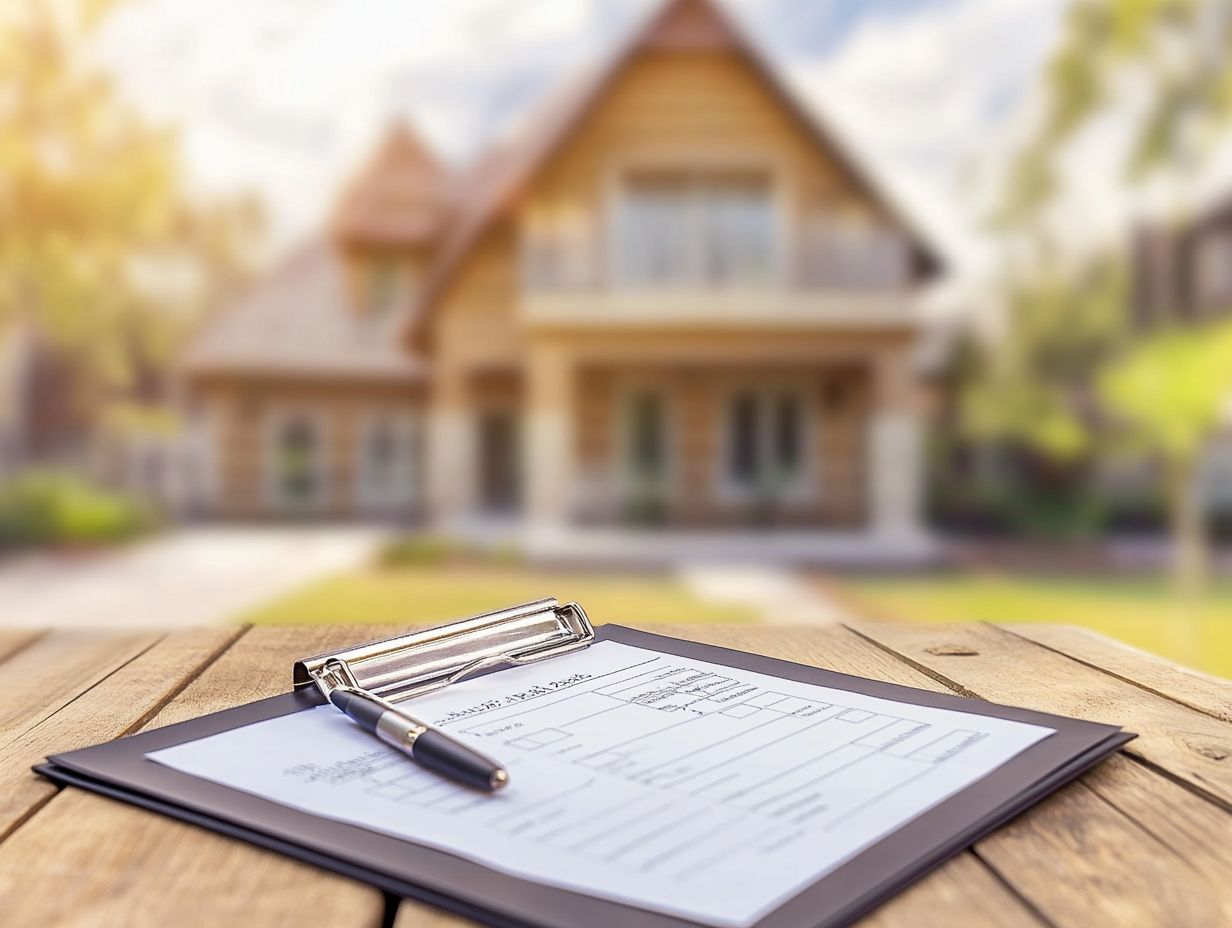
The garage checklist is a vital part of a thorough home inspection, highlighting the importance of thorough home inspections. It ensures that the garage’s structure, systems, and safety features meet essential maintenance standards.
When examining the garage, pay close attention to the integrity of the doors and their opener mechanisms. It’s also important to inspect the flooring for any cracks or damage that could compromise safety and usability.
Proper ventilation is another key factor. It helps prevent moisture buildup, which can lead to mold and dampness. Each of these elements not only enhances the garage’s functionality but also contributes significantly to the overall property value.
A well-kept garage boosts curb appeal and makes buyers feel confident about the home’s upkeep.
11. Safety Checklist
A safety checklist is a key part of the home inspection process. It addresses critical safety concerns like the functionality of smoke detectors, fire alarms, and other systems that protect you from potential hazards.
Make sure these safety systems are fully operational. This not only grants you peace of mind but also helps you comply with local regulations. Local authorities enforce stringent codes that require homeowners to uphold specific safety standards; failing to do so could affect your insurance coverage or lead to costly fines.
As a result, homebuyers actively seek properties with established safety protocols.
Without a solid grasp of these requirements, you might unintentionally invest in homes that present future liabilities. Integrating safety considerations is not just a regulatory necessity; it s a critical factor in your homebuying decision-making process.
12. Energy Efficiency Checklist
The energy efficiency checklist is essential during your home inspection. It allows you to evaluate key systems like heating and cooling systems to find ways to reduce energy consumption and enhance comfort.
Beyond these systems, it’s crucial to examine insulation, windows, and appliances. All of these significantly influence your home’s overall energy performance.
Proper insulation guards against heat loss in winter and lowers cooling costs in summer, ensuring your indoor climate remains consistent and inviting.
Upgrading to energy-efficient windows not only enhances your home s aesthetics but also minimizes drafts and energy leaks, making your space more enjoyable.
Checking the energy ratings of your appliances can reveal opportunities for replacements to lower your utility bills while boosting your home’s market appeal. Energy ratings indicate how efficiently an appliance uses energy.
By making these thoughtful improvements, you can enjoy substantial cost savings and enhance your property’s value.
13. Environmental Checklist
The environmental checklist plays a vital role in your home inspection. It highlights potential hazards like asbestos, mold, and other environmental safety concerns that could affect everyone s well-being in the house.
Recognizing these issues is essential. They can drastically erode property value and trigger expensive repair work needed to fix problems. As a prospective homeowner, being aware of such environmental risks protects your financial investment and ensures a safe living space.
By carefully checking the findings of the environmental checklist, you can gauge the risks tied to the property. This information equips you to negotiate necessary repairs or request price adjustments, leading to more informed decisions about your future home.
Therefore, prioritizing thorough testing is crucial for safeguarding both your health and your investment.
14. Pest and Mold Checklist
The pest and mold checklist is crucial during a home inspection. It evaluates the presence of pests and mold that could lead to structural damage or health concerns in your home.
This thorough assessment is your first step toward ensuring a safe and healthy living environment. Be particularly vigilant about common pests like termites, rodents, and carpenter ants, which often leave unmistakable signs such as droppings, hollowed-out wood, or distinct trails.
Mold is another red flag. Look for discoloration on walls, musty odors, and elevated humidity levels, as these can indicate underlying moisture problems that might compromise both your home’s structural integrity and your health.
The inspection report provides meticulous documentation of these findings. This gives you the power to take effective pest control measures and pursue any necessary remediation promptly.
15. Final Walkthrough Checklist
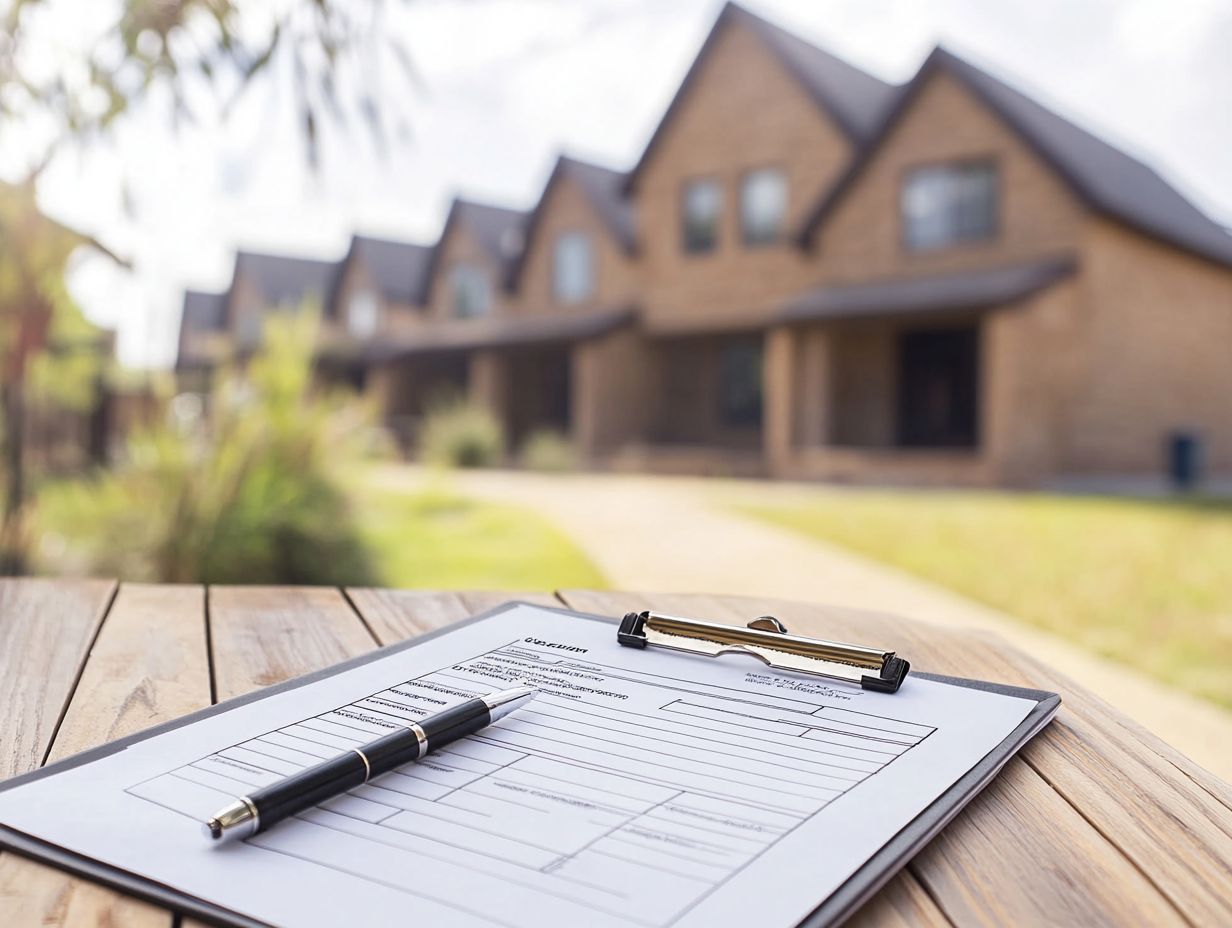
The final walkthrough checklist is an essential step in your homebuying journey. It allows you to confirm that all agreed-upon repairs and conditions have been satisfied before closing.
This ensures peace of mind and that all contingency clauses conditions in the contract that must be met before the sale is finalized are adhered to. This important review guarantees that major systems like plumbing, electrical, heating, and air conditioning are functioning properly, which can greatly influence your future maintenance costs.
Keep an eye out for any cosmetic repairs or unforeseen damages that may have arisen since your last visit. A meticulous inspection at this stage protects you from unpleasant surprises after the purchase, reinforcing your confidence in your decision.
This final check is your moment to ensure everything is just right before making one of the biggest decisions of your life!
Frequently Asked Questions
What is The Essential Checklist for Home Inspections?
The Essential Checklist for Home Inspections is a detailed list of what to check in a home. It covers all major areas of a house, from the exterior to the interior, and helps identify potential issues before purchasing or selling a home. For a thorough overview, consider the top 10 things to check during a home inspection.
Why is The Essential Checklist for Home Inspections important?
The Essential Checklist for Home Inspections is important because it helps homebuyers and sellers ensure that the property is safe, structurally sound, and in good condition. Additionally, using the ultimate home staging checklist can help identify potential problems that may require costly repairs in the future.
How can The Essential Checklist for Home Inspections be used?
The Essential Checklist for Home Inspections can be used by home inspectors, real estate agents, and homeowners to conduct thorough and accurate inspections. It serves as a guide to ensure that no important areas are missed during the inspection process, much like the essential home inspection toolkit.
What are some key areas covered in The Essential Checklist for Home Inspections?
The Essential Checklist for Home Inspections covers a wide range of areas, including the foundation, roof, exterior walls, plumbing, electrical systems, heating and cooling systems, insulation, and ventilation. For a thorough understanding, refer to understanding the basics of home inspections, which also includes a visual inspection of appliances, windows, doors, and stairs.
Is The Essential Checklist for Home Inspections customizable?
Yes, The Essential Checklist for Home Inspections can be customized to suit the specific needs and requirements of a particular property. Home inspectors can add or remove items based on the type and condition of the house, making it a versatile tool for any home inspection. It’s also helpful to be aware of the most common findings in home inspections to better prepare for the process.
Can the Essential Checklist for Home Inspections Be Used for New Construction Homes?
Yes, the Essential Checklist for Home Inspections can be used for new construction homes. These homes may not have the wear and tear of older homes, but they still need a thorough inspection.
This ensures everything is built according to local building codes, which are the regulations that govern construction standards. Don’t take chances with your investment! A thorough inspection gives you confidence that your new home is safe and sound.
